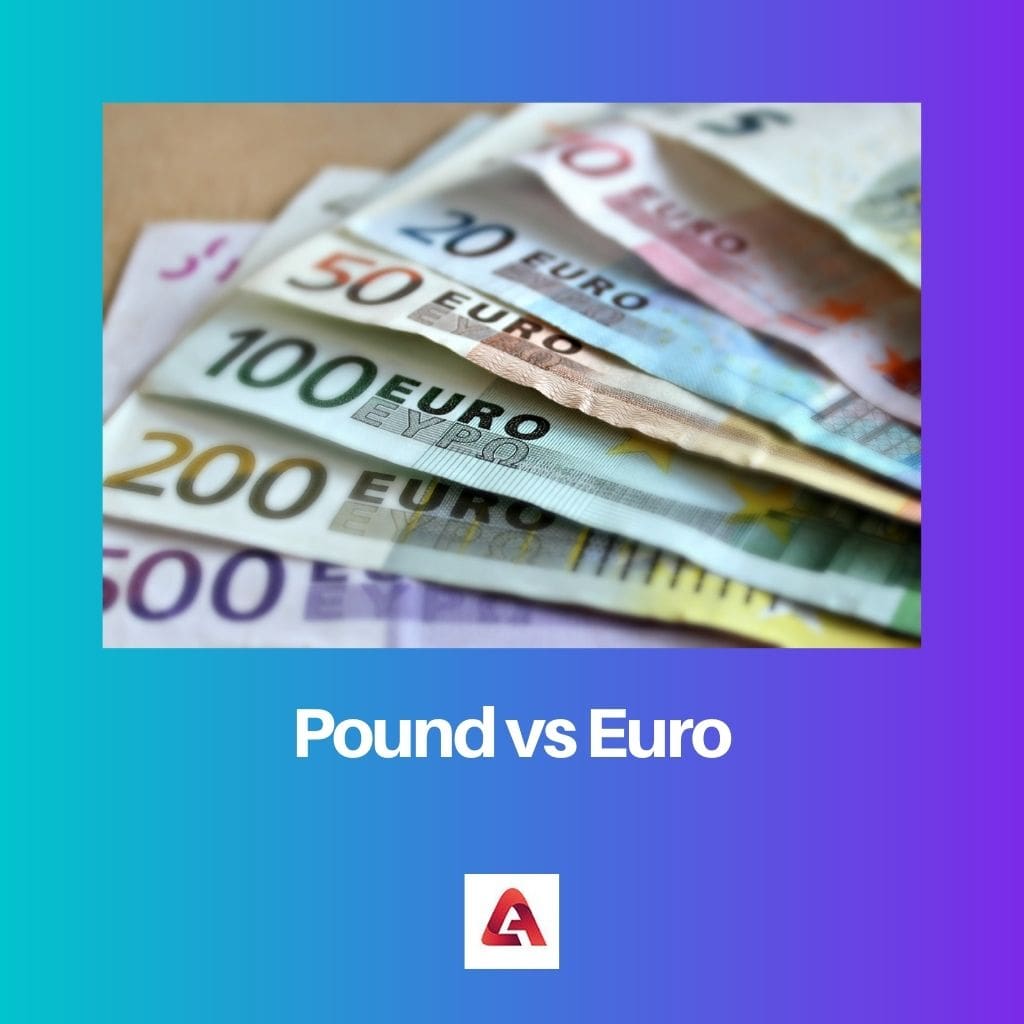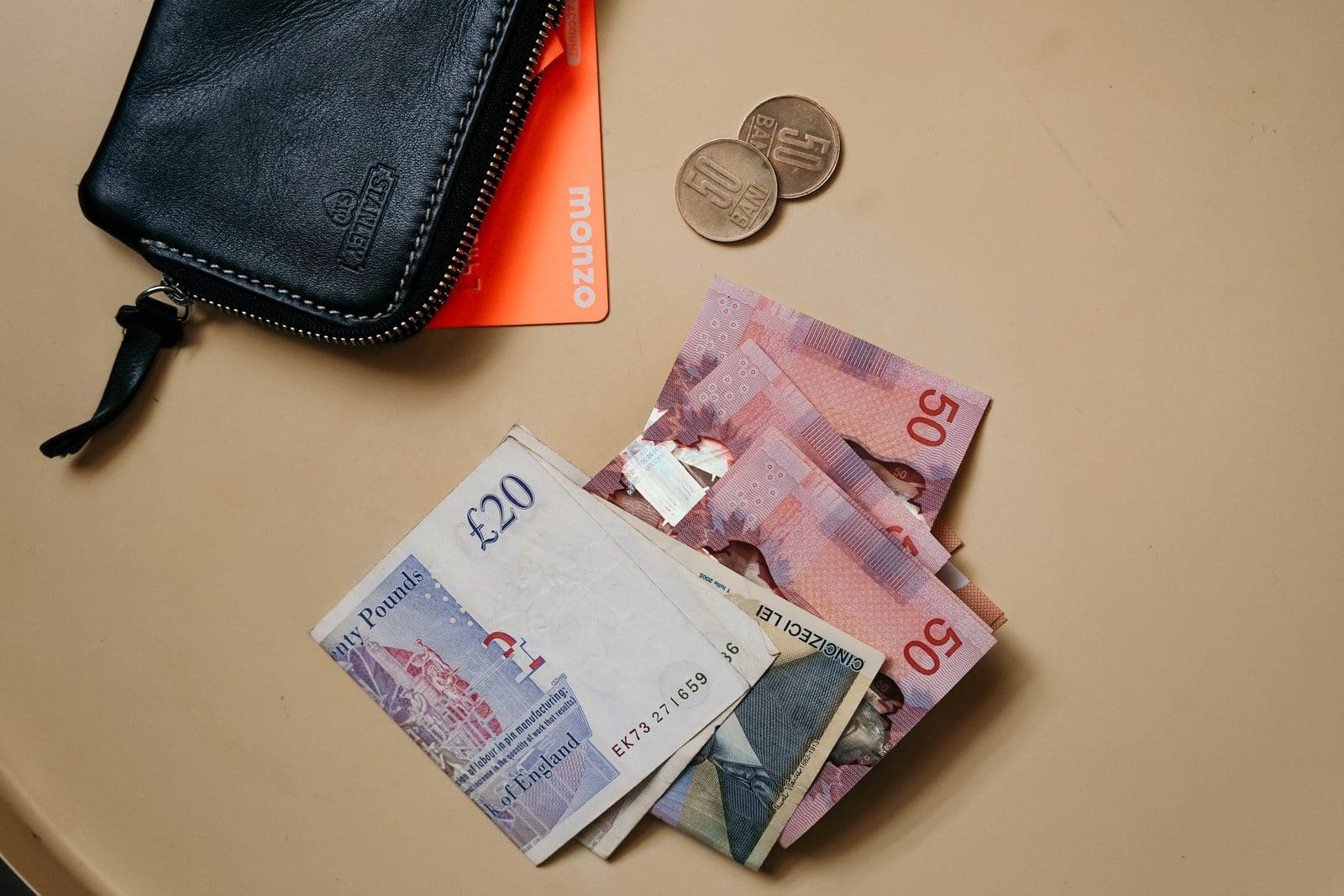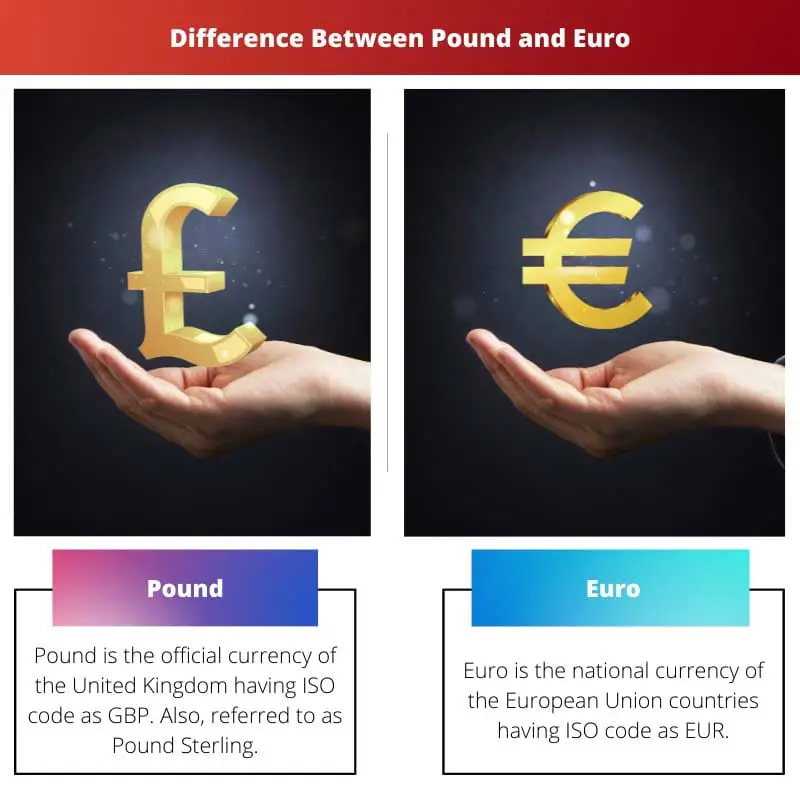In our everyday lives, money holds a substantial prestige and significance bigger than any other asset. Together, there is a total of 180 currencies in the world originating from different countries.
Among these, two of the most popular currencies are Pound and Euro. Right from the exchange rates to their symbols, these are different currencies.
Yet, many of us are confused between the Pound and Euro and sometimes mix them in our intellects. Currency trading is quite prevalent everywhere in the world.
In that context, thoroughly understanding global currencies is very important.
Key Takeaways
- The pound (GBP) is the official currency of the United Kingdom, while the euro (EUR) is the official currency of 19 European Union member countries.
- The pound and euro have different symbols: the pound is represented by “£” and the euro by “€.”
- Both currencies are widely used and traded on the foreign exchange market, but their value and exchange rates may fluctuate based on various economic factors.
Pound vs Euro
A pound, also known as Great British Pounds, is the currency officially used in the United Kingdom, and only nine regions make use of this currency. Euro is the official currency of the European Union member states, and about nineteen countries use the currency for buying and selling.

But as a commoner, if you want to learn the variation between any two currencies, all you need to know is their significance, exchange rates, symbols, and origin. Both the Pound and the Euro fall and rise at different rates in the exchange market depending upon the global market conditions and cannot proclaim to be similar by any means.
Comparison Table
| Parameter of Comparison | Pound | Euro |
|---|---|---|
| Inception | The pound is the official currency of the United Kingdom, having the ISO code GBP. Also referred to as Pound Sterling. | Euro is the national currency of the European Union countries having the ISO code EUR. |
| Symbol | £ | € |
| Currency users | 9 British regions use this currency. In the Pitcairn Islands, this currency is used unofficially and is not regulated by the Bank of England. | 19 EU member states to use this currency. This currency is prominent in Eurozone regions c like Belgium, Austria etc. |
| Exchange rate | In the foreign exchange market, the exchange rate for 1.15 Euro for 1 Pound. | The exchange rate, in this case, is 0.89 Pound Sterling against 1 Euro. |
| Handler | The Central Bank of England manages this currency (BoE). | The European Central Bank manages this currency (ECB). |
What is Pound Currency?
This is the official currency of the United Kingdom and surrounding British Territories. The Pound (£) can also be called GBP, an abbreviation for British Pound Sterling; you may also refer to the pound as the UK or simply Sterling.
All these terms indicate the same currency. Thus, there must be no confusion when you exclaim any of these names during a conversation or in a statement.
The British Pound is the world’s 3rd strongest reserved currency and the oldest. This currency comes from the Latin term ” Libra, ” meaning weight.
History indicates that the Pound was first introduced as money in the year 760, and ever since, they existed in many countries and their surrounding regions. Initially, the Pound was not only the accepted currency in Great Britain, but it also continued its legacy in various colonies of the British Empire, namely Canada, New Zealand, and Australia, until they had their authorized banknotes.
Note: Zimbabwe, an African country, also uses the Pound as their monetary.
In today’s time, the currency exists in different sects;
e.g., Notes : £1, £5, £10, £20, £50, £100, £500.
Coins : £1, £2, £5,10p, 20p, 25p, 50p,1p, 2p, 5p.
P.S.- £500 white note is the Bank of England’s highest denomination.
The Bank of England can make banknotes and coins for this currency.

What is Euro Currency?
Euro is the official currency of 19 European Union member states. The symbol for Euro is €, which is indicated in every coin, note, or bill.
The abbreviation for Euro is EUR. So, either an € or EUR can denote this currency.
Euro is the second-largest reserve currency in the world, holding 2nd status in currency trading.
The Euro currency attained existence in 1995 but got introduced in 1999 as currency in the economic market. Euro is highly dominant in countries like Germany, Belgium, Finland, Vatican City, and Spain.
There are 7 denominations for notes: €5, €10, €20, €50, €100, €200, and €500. 500 Euro notes are no longer in use. But the rest of the banknotes are still active.
There are 8 small denomination coins: 1c, 2c, 5c, 10c, 20c, 50c, €1 and €2. All the Euro cash or coins are issued by European Central Bank situated in Frankfurt, and the Eurosystem administers and regulates the circulation of the Euro.

Main Differences Between Pound and Euro
- Currency units: In simple words, 1 Euro is made of 100 cents; similarly, 1 pound equals 100 pence and is pronounced as pee. e.g., 30 pence can be pronounced as thirty pee. Therefore, the small unit of Euro is cents, and for Pounds, it’s pence.
- .World trading position: Euro stands second in the world treading market and the second-largest reserved currency in the EU popular states. The pound is fourth in the trading system and is the world’s third-largest reserved currency. The pound is the oldest currency ever introduced in the world.
- Foreign Exchange: A pound equals 1.12 Euros, whereas a Euro equals 0.89 Pounds. However, the figures are never constant and change depending on the global market scenario.
- Managers: Banks in different countries generate all the banknotes and coins. The Central Bank of England generates pounds; the European Central Bank also generates Euro coins and bills. These banks make all the decisions and modifications whenever needed.
- Trade Rate: The exchange rate of the pound is higher than Euro.
Factors Influencing Pound and Euro Relation
This section will discuss the factors that influence the relationship between the British Pound (GBP) and the Euro (EUR). Various economic, political, and global factors can impact the exchange rate between these two currencies. Let’s break these down further.
Economic Policies
Economic policies play a key role in determining the value of both the Pound and Euro. Central banks such as the Bank of England (BoE) and the European Central Bank (ECB) establish monetary policies and interest rates that may affect the currencies’ strength. When a central bank raises interest rates, it attracts foreign investment, increasing demand for the currency. Conversely, lower interest rates may weaken a currency. Additionally, fiscal policies like government spending and taxation can impact the overall economic health and influence the exchange rate between GBP and EUR.
Political Climate
The political climate in both the United Kingdom and the Eurozone can also significantly impact the Pound-Euro relationship. Political stability and strong governance contribute to a stable currency, while political uncertainty or internal conflicts can lead to currency fluctuations. For instance, major political events such as Brexit significantly affected the value of the Pound relative to the Euro. As a result, keeping a close eye on political developments in both regions can help you understand the potential impact on GBP and EUR exchange rates.
Global Events
Lastly, global events can greatly influence the relationship between the Pound and Euro. These events can range from natural disasters to wide-scale economic crises, and may have direct and indirect effects on currency values. For example, during a global financial crisis, investors may seek refuge in stable currencies, which could increase demand for the Pound or Euro, depending on prevailing conditions.
Additionally, major global events like the COVID-19 pandemic have significantly impacted economic growth and financial markets, which, in turn, can lead to fluctuations in the GBP/EUR exchange rate.

- https://mpra.ub.uni-muenchen.de/1981/1/MPRA_paper_1981.pdf
- https://www.emerald.com/insight/content/doi/10.1108/JES-01-2018-0007/full/html

The writer’s thorough understanding of global currencies shines through in this comprehensive comparison of pound and euro.
The article is a stellar example of detailed and articulate analysis. It provides a comprehensive understanding of pound and euro.
Absolutely, Dennis51. This article provides valuable insights into the world of currencies and their dynamics.
Thank you for this informative and comprehensive comparison between pound and euro. This really clears up a lot of confusion for me.
I couldn’t agree more, Arichardson! It’s great to have such detailed information available.
I must say, the detailed comparison of the pound and euro in this article has truly enriched my knowledge. Well done!
I couldn’t agree more, Zbrown. This article is a goldmine of valuable information.
This article’s detailed comparison of pound and euro is nothing short of exceptional. It’s a must-read for anyone interested in the subject matter.
Couldn’t agree more, Ywilson. The depth of analysis and clarity in this article is truly commendable.
This article is truly informative and very well-researched. Kudos to the writer for such a fantastic piece.
It’s always great to come across content that caters to the intellectually curious like us. This article does just that.
Couldn’t have said it better myself, Murphy Andrew. The level of detail provided here is commendable.
The detailed comparison in this article provides valuable and practical information on pound and euro. It’s a commendable read!
Absolutely, Yparker. The insights provided here are sure to enrich anyone’s understanding of these currencies.
The writer has done a phenomenal job of simplifying complex currency concepts. This article is a treasure trove of knowledge.
The writer’s deep dive into the comparison between pound and euro is truly impressive. It’s evident that a considerable amount of research has gone into this article.
Impressive work on elucidating the differences between pound and euro. The article is a testament to the writer’s expertise.
I couldn’t have said it better, Walker Lucas. The depth of knowledge presented here is truly remarkable.
The writer’s expertise shines through in this brilliant piece. The comparison of pound and euro is elucidated with exceptional clarity.
This article serves as an invaluable resource for those seeking to enhance their understanding of global currencies.
Absolutely, Alexander80. The article is a testament to the writer’s mastery of the subject matter.
I found this article to be exceptionally well-written and comprehensive. It provides insight into global currencies in an engaging manner.
Absolutely, Steve90! This article is a great resource for anyone interested in understanding the complexities of currencies.